Packers 2021 Redraft: Fifth-Round Pick TJ Slaton
GREEN BAY, Wis. – Hindsight is always 20/20, especially when it comes to the NFL Draft. A lot of things go into whether or not a draft pick was worth the investment. Was the scouting department’s projection correct? Was the player a good fit for the scheme? Was he given the proper coaching? How does he handle life as a professional?
With that as a backdrop, let’s revisit the Green Bay Packers’ 2021 draft class in a series of stories. Nine players were selected, including fifth-round pick TJ Slaton with the 173rd overall selection.
Before the Draft
The Packers entered the draft needing help on the defensive line because, well, they always need help on the defensive line. While Kenny Clark was back to lead a defensive line that included Dean Lowry, Kingsley Keke and Tyler Lancaster, it was a group short of true difference-makers beyond Clark. With Lowry’s price tag and Lancaster in his final season under contract, the Packers really needed a big guy to develop, if nothing else.
Packers Select TJ Slaton in Fifth Round
A starter only as a senior at Florida, he had 1.5 sacks and 3.5 tackles for losses among 37 tackles in 12 games. He drew two holding penalties. At 6-foot-4 and 330 pounds Slaton ran an impressive 5.08 in his 40-yard dash. He put up 27 reps on the 225-pound bench press. He’s able to dunk and do a backflip.
His predraft workout sent a scouting director back to the film room.
“The dude’s 340 and he moves like he’s 290,” he said. “He’s explosive, he’s disruptive. We had him a little bit low. After the pro day, I was like, ‘Let’s watch this dude again.’ You go back and watch him, you’re like, ‘This dude could play in the league.’ I see all the reasons why teams had him lower. When you watch the full body of work, it’s a lot of inconsistency. He’s got some big-boy tendencies when he gets lazy. But, when he does it right, he can be a pretty disruptive run defender, for sure.”
At the Time, I Would Have Picked …
Arkansas DT Jonathan Marshall. Marshall had size (310 pounds), athleticism (4.81) and strength (36 reps on the 225-pound bench press). And he had better production than Slaton while facing largely the same competition with 11 tackles for losses during his final two seasons.
The Verdict
Playing off the bench for all 17 games, Slaton contributed a pair of half-sacks among his 23 tackles. With Keke inactive toward the end of the season, Slaton played 103 snaps during the final four games of the regular season. He wasn’t great but he flashed enough here and there – against Seattle in Week 10 and Minnesota in Week 17, specifically – to show he could become a real contributor in 2022. And they’ll need it. Not only is Lancaster headed to free agency but the Packers dumped Keke before the playoff game.
What of Marshall? A sixth-round pick by the Jets, he played in four games and contributed two tackles.
Given the need on the D-line and who was available, this appears to have been the right pick. Houston got a 15-game starter on the defensive line with sixth-round pick Roy Lopez but Slaton’s potential is intriguing.
The starting point is a simple one for defensive line coach Jerry Montgomery.
“First and foremost, he’s got to be a first- and second-down run stuffer. Period and point blank,” Montgomery said late in the season.
Added defensive coordinator Joe Barry: “From a talent standpoint, he’s got everything you want. He’s got size, he’s got athleticism, he’s got speed for a 300-pound-plus man. I’m really excited about him. Is he a finished product? Absolutely not. He still has a million miles to go but, man, he’s traveled a million miles. I think it’s exciting because I think he’s really, really going to be a good player if he stays on the course that he’s been on. I tip my hat to not only Jerry Montgomery but TJ, also, because Jerry’s coached his butt off but TJ’s taken that coaching.”
Grading the Defensive Line
Kenny Clark ($6.98 million cap charge; ranking No. 21 among interior defensive linemen)
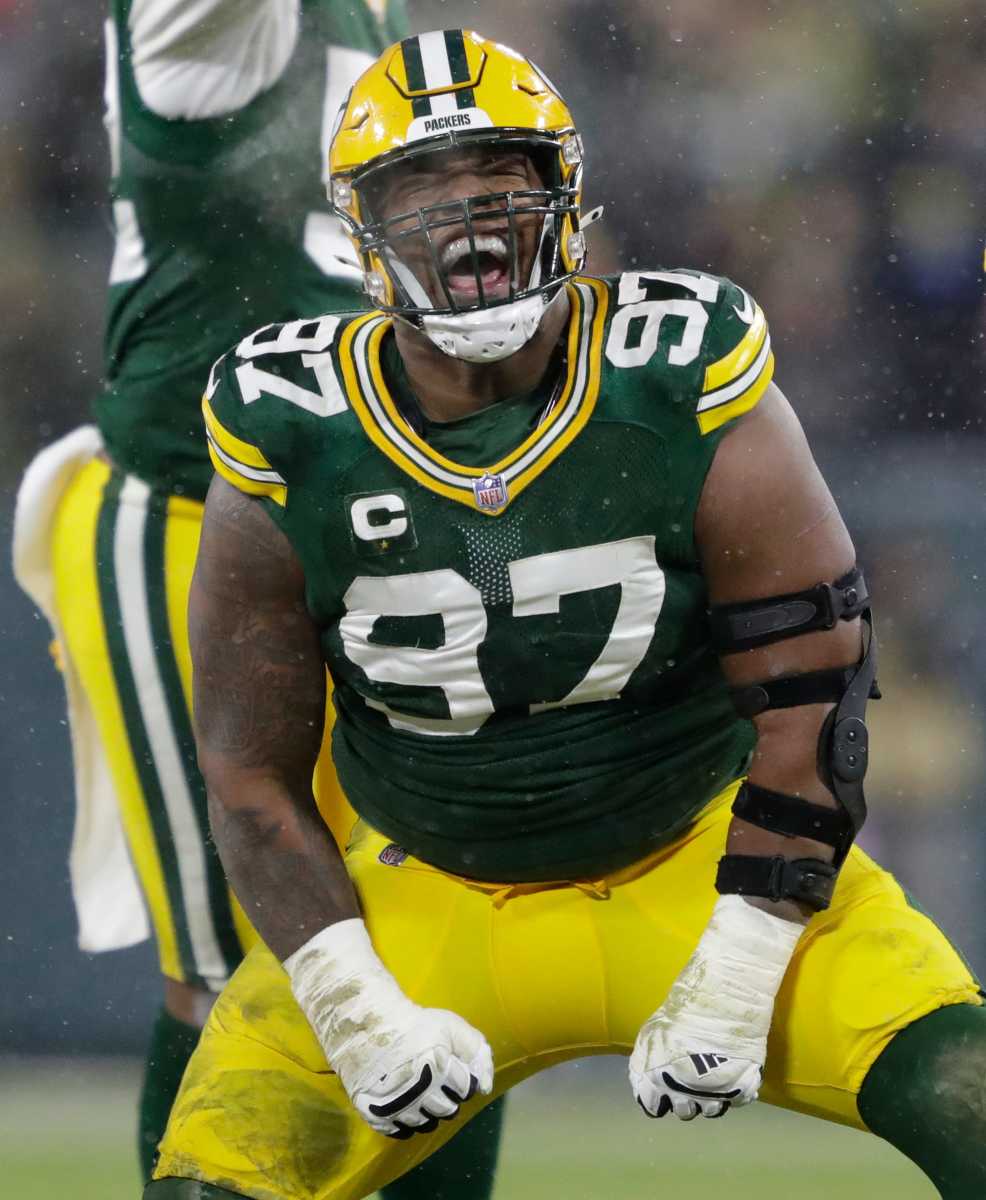
Just like he did in 2019, Clark earned Pro Bowl honors by rushing the passer and commanding double teams. Clark recorded 48 tackles, four sacks, six tackles for losses and 13 quarterback hits. That’s better than his 42 tackles, two sacks, three tackles for losses and six quarterback hits in 2020 but not as good as his 62 tackles, six sacks, nine tackles for losses and seven quarterback hits in 2021.
As a pass rusher, he was really good. While the sack total was nothing to write home about, he finished fourth interior defensive linemen with a career-high 67 pressures, according to PFF. In its pass-rushing productivity, he ranked eighth out of 127 interior defenders with at least 136 rushes (TJ Slaton’s number).
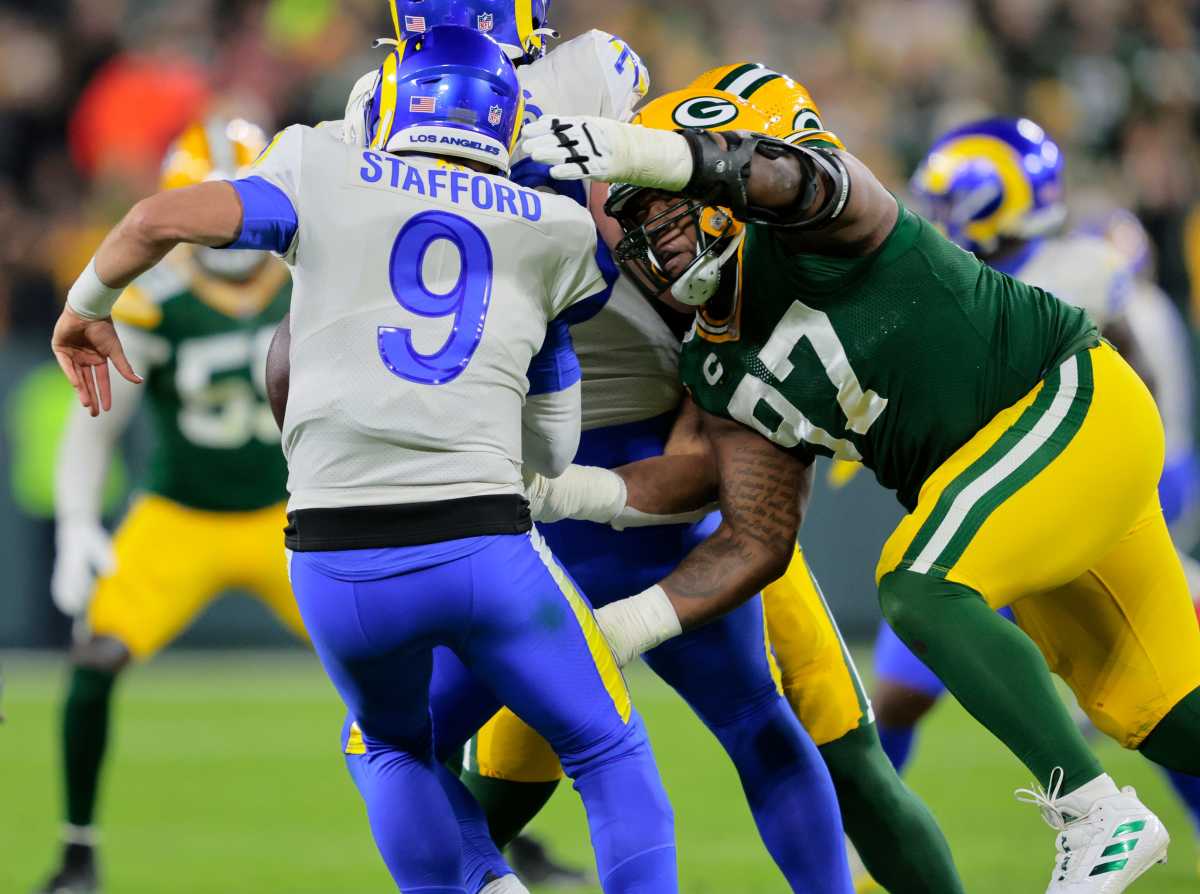
His run defense wasn’t quite as good as it was in 2019, though. Of 135 interior defenders who played at least 114 snaps on run defense (Slaton’s number), he tied for 31st with a run-stop percentage of 9.2 and tied for 40th with an average tackle distance of 2.1 yards downfield. Statistically, Green Bay’s run defense was no better with Clark in the lineup than when he was off the field.
Clark was a workhorse, logging 80 percent playing time in 13 games. Among all interior defenders, he ranked 12th with 781 snaps. His tackle rate was one for every 16.3 snaps. As good as he is, there’s room for improvement.
Grade: B.
Dean Lowry ($3.81 million cap charge; ranking No. 43 among IDL)
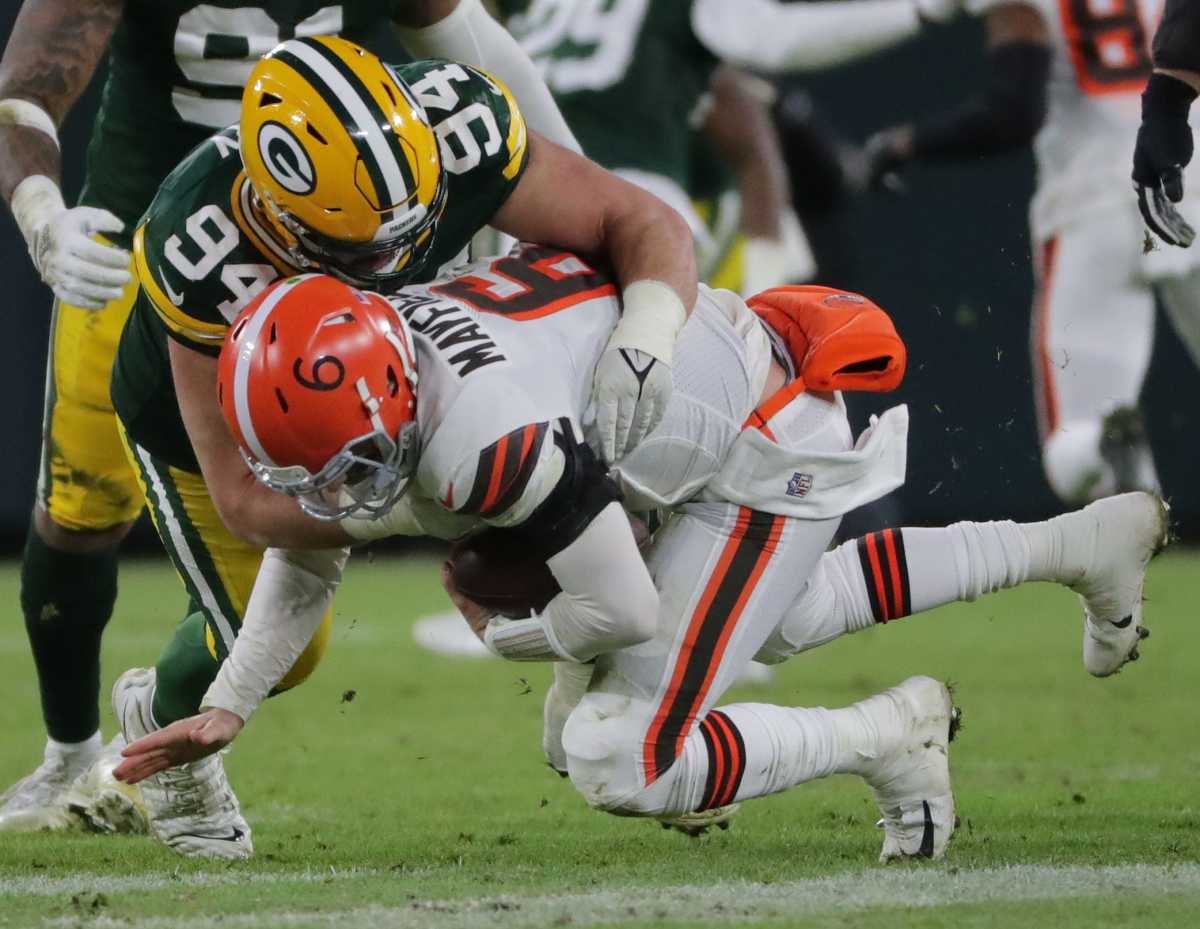
Lowry started every game for a third consecutive season. Along with his 42 tackles, he set a career high with five sacks. After a combined three sacks, six quarterback hits and four tackles for losses in 32 games in 2019 and 2020, Lowry had the five sacks, nine quarterback hits and five tackles for losses in 2021. So, from a splash-play perspective, Lowry was excellent.
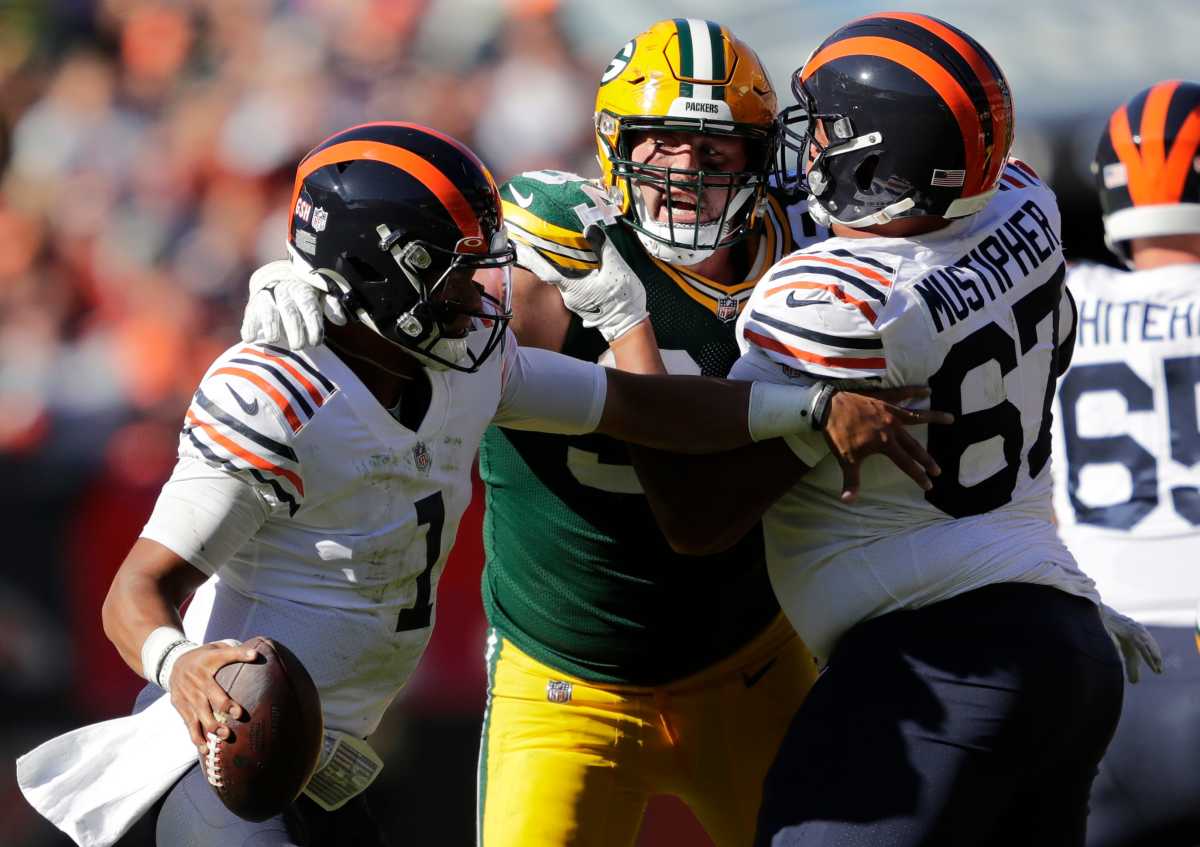
Lowry finished 17th in PFF’s pass-rushing productivity. His 42 pressures were three more than his combined total from the previous two seasons. However, against the run, his average tackle came 2.9 yards downfield and his 3.3 run-stop percentage ranked a terrible 126th out of the aforementioned 135 interior defenders. The team allowed 0.11 yards more per carry with Lowry on the field than when he was off. He did, however, match Clark’s unit lead with seven stuffs (a tackle at or behind the line vs. the run). His tackle rate of one for every 16.0 snaps was just a bit better than Clark.
In eight career playoff games, Lowry has zero sacks, zero quarterback hits and zero tackles for losses.
Grade: C.
Tyler Lancaster ($1.25 million cap charge; ranking No. 92 among IDL)
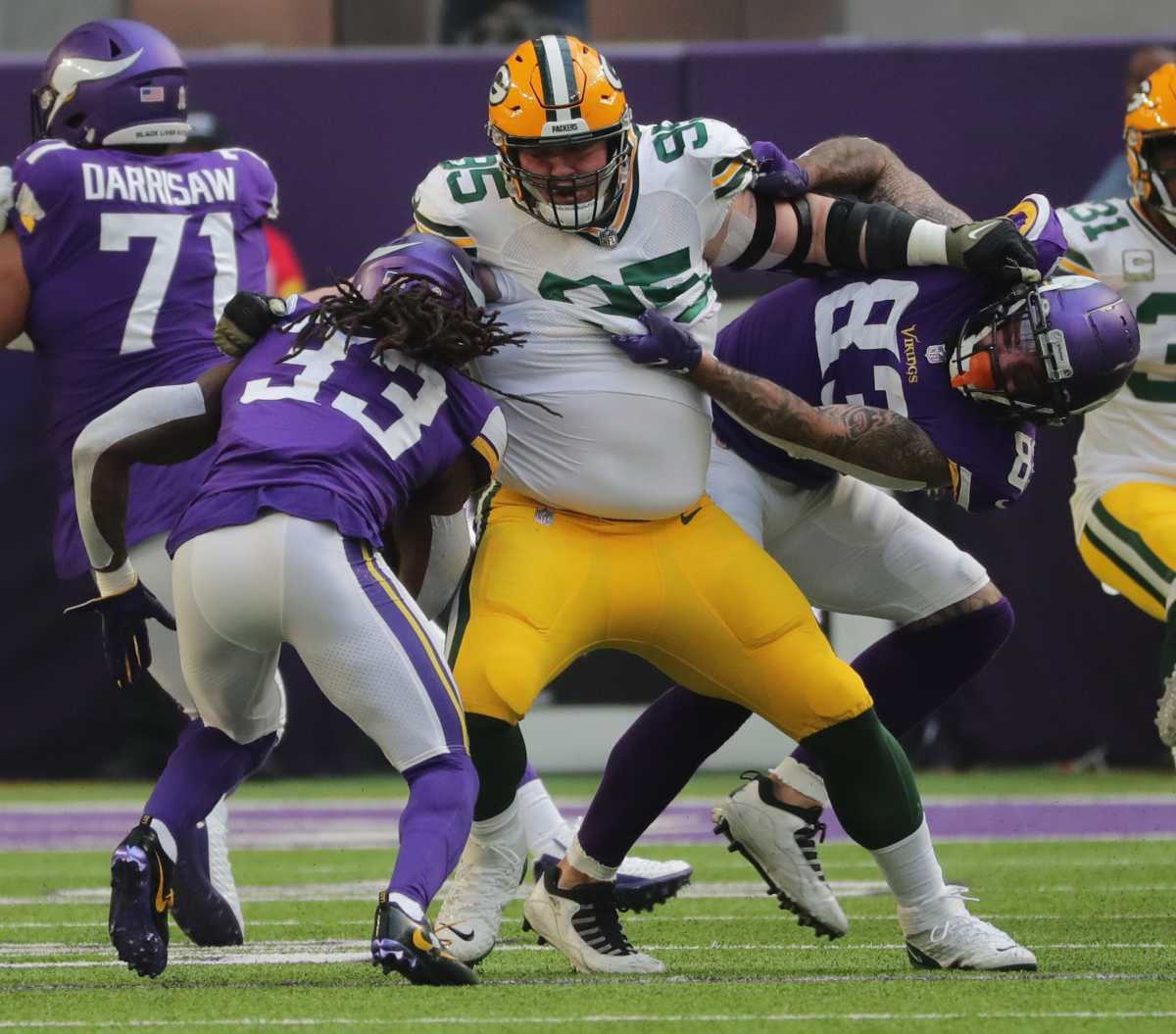
Lancaster did what he usually does: play no-nonsense run defense. His 31 tackles included three for losses. That TFL count matched his total from his first three seasons. Two of those came at Minnesota, when he delivered the best performance of his career. His season tackle rate was one for every 10.3 snaps, tops on the unit.
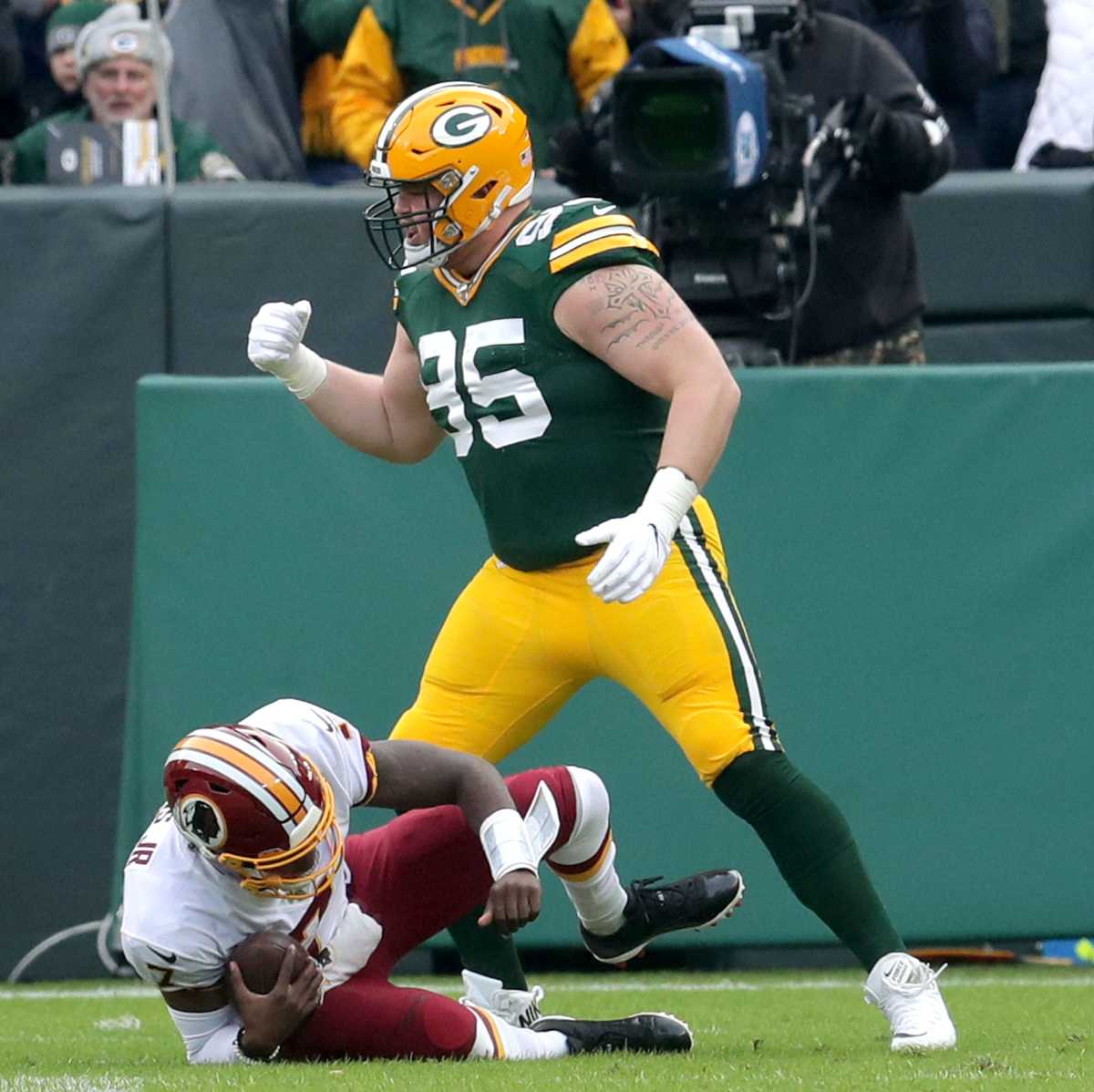
Of the 135 interior defensive linemen with at least 114 run-defending snaps, he tied for 23rd in PFF’s run-stop percentage. His average tackle came 2.3 yards downfield and he had six stuffs, one behind Clark and Lowry for the unit lead. The team’s run defense was a resounding 0.65 yards better when he was on the field. He did nothing as a pass rusher, though, ranking 120th out of 127 in PFF’s pass-rush productivity with just four pressures in 142 passing plays. In four seasons, he has 1.5 sacks and 20 pressures.
Lancaster will be a free agent. It’s not as if the team is bursting at the seams with run-stopping big guys.
Grade: C.
Kingsley Keke ($928,316 cap charge; ranking No. 118 among IDL)
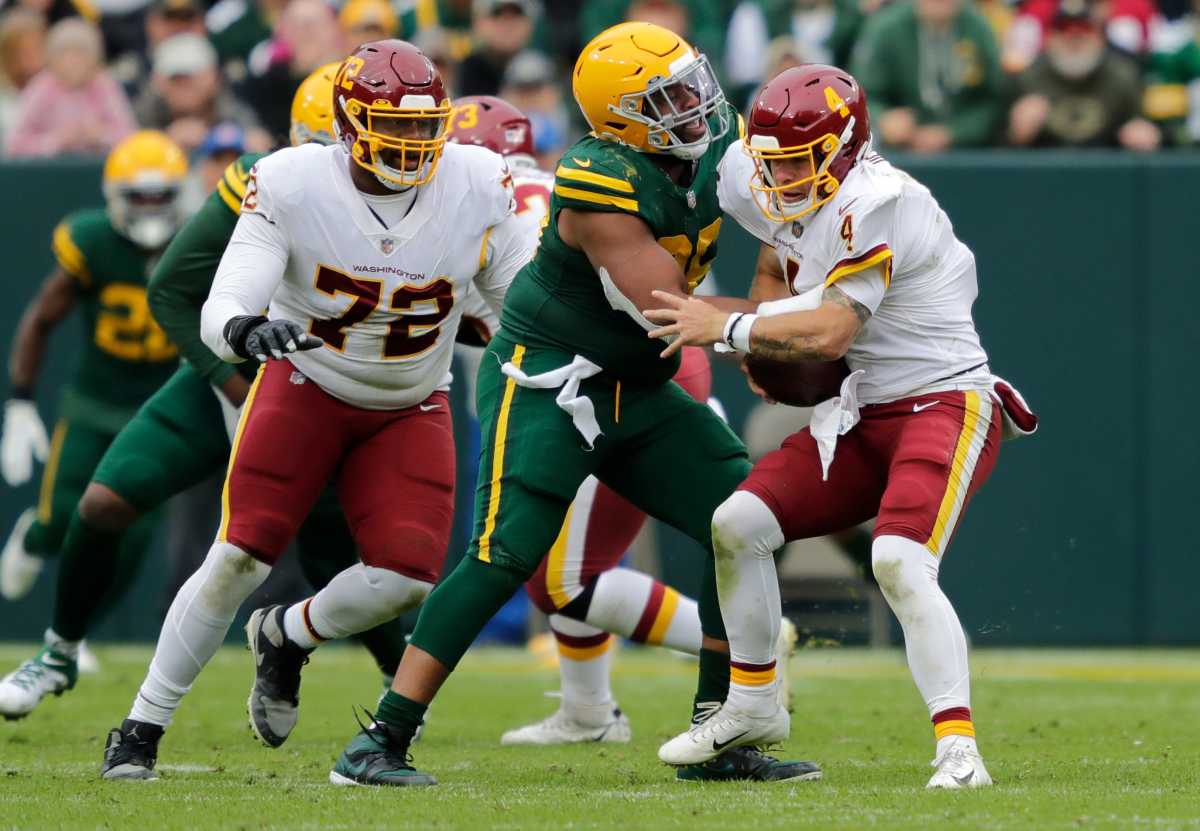
A fifth-round pick in 2019, Keke showed his promise last season with four sacks and eight quarterback hits in 15 games (nine starts). This season went horribly wrong, though. On the field, he was OK, with 2.5 sacks and four quarterback hits in 12 games (eight starts). He added 23 tackles, a tackle rate of one for every 17.1 snaps. However, he missed time with a concussion, was inactive for the final three games and released before the playoffs. Teams aren’t in a hurry to get rid of good players – especially big guys who can rush the passer – so the issues were more personality-related.
He ranked 33rd out of 127 interior defenders in PFF’s pass-rushing productivity with a career-high 24 pressures. Of 135 interior defenders, he ranked 70th in PFF’s run stop percentage. While average tackle came 3.3 yards downfield, the team’s run defense was 0.17 yards better when he was on the field.
Keke quickly landed with the Texans, so he’ll spend Year 4 closer to home. His performance on the field was worthy of a C-plus.
Grade: F.
TJ Slaton ($730,130 cap charge; ranking No. 149 among IDL)
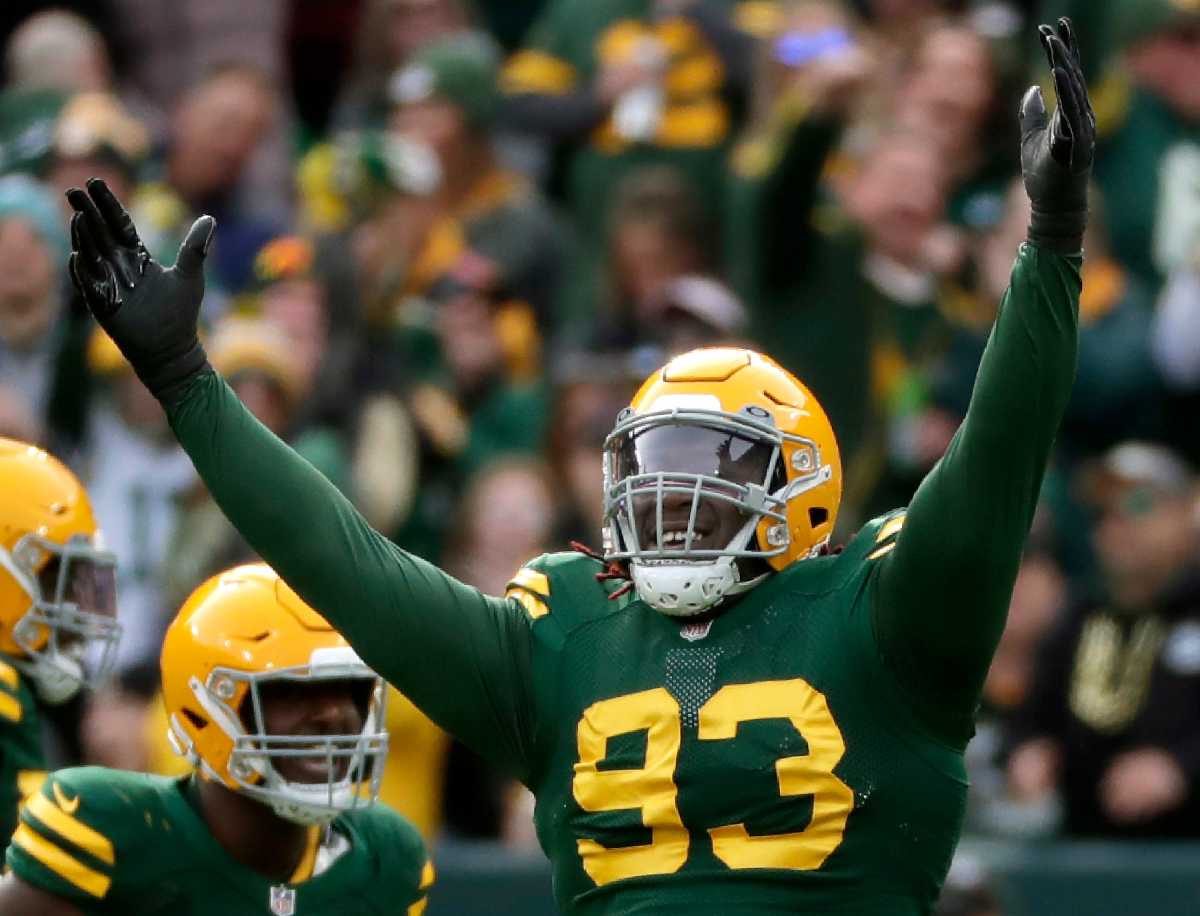
A fifth-round pick this year who was blessed with outstanding athleticism for his size, Slaton played 255 snaps, with almost half of those coming during the final four games. He finished with 23 tackles, one sack and two quarterback hits. His tackle rate was one for every 11.1 snaps.
Slaton finished 97th out of 127 in PFF’s pass-rushing productivity. Of his six pressures, three came against Seattle but only one came during the final seven games. For his size, he should have been a bigger asset vs. the run. He was 60th out of 135 in run-stop percentage. While he had zero stuffs and his average tackle came 3.3 yards downfield, the run defense was 0.71 yards better when he was on the field – the biggest difference among any defender getting regular playing time.
If the run defense is going to take a sizable step forward in 2022, it will be because of Slaton reaching his potential.
Grade: C-plus.
Jack Heflin ($662,333 cap charge; ranking No. 162 among IDL)
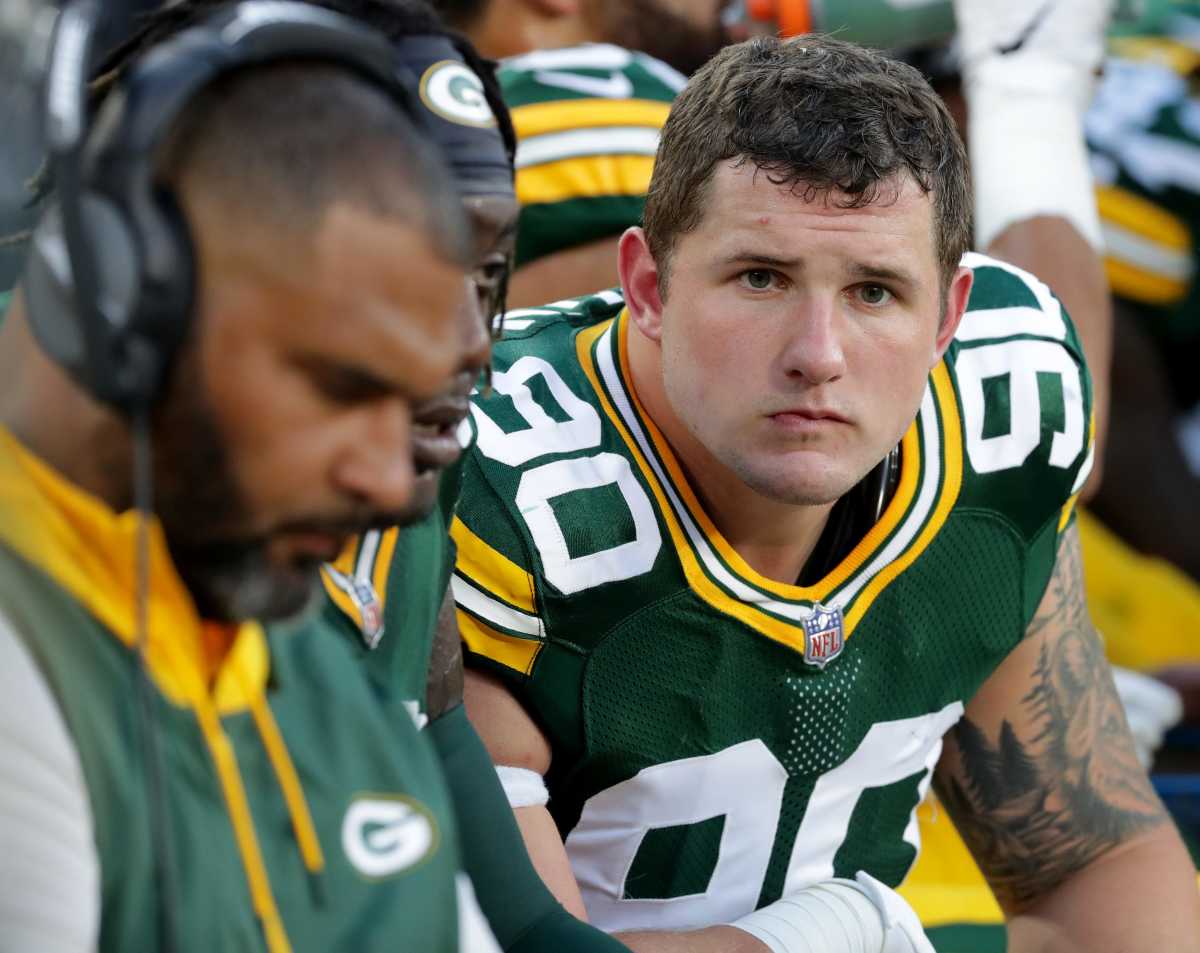
A college walk-on, Heflin was a great story in making the roster coming out of training camp. However, he barely played. Heflin’s 17 defensive snaps were split over three games. By season’s end, he had fallen behind practice-squad player Abdullah Anderson on the depth chart. He finished the season with just one assisted tackle.
Grade: F.
More Packers Draft Rewind
It's always fun looking back on the NFL Draft and seeing who was picked, thinking about who you would have picked, and how it all turned out. So, in Part 1 of a 2021 #Packers redraft, it's first-round pick Eric Stokes.https://t.co/8psp7XI61X
— Bill Huber (@BillHuberNFL) February 7, 2022
I'm doing a #Packers "redraft" series of stories. Part 1 came out earlier today on Eric Stokes, who was tremendous.
— Bill Huber (@BillHuberNFL) February 8, 2022
Here is Part 2 of the series. Second-round pick Josh Myers is the impetus behind the series.https://t.co/XW6doSggmn
What would have happened had the #Packers not traded up in the third round to select receiver Amari Rodgers?
— Bill Huber (@BillHuberNFL) February 9, 2022
Well, that leads to an interesting alternate reality.https://t.co/2xLFHHSKTY
In Part 4 of our look back at the #Packers' draft, here's Royce Newman. Hindsight being 20/20 and with just one year of information, was he the right pick? https://t.co/FdH8fwreSP
— Bill Huber (@BillHuberNFL) February 9, 2022
-6269900502a1e0ca581b6c34076450d4.jpg)